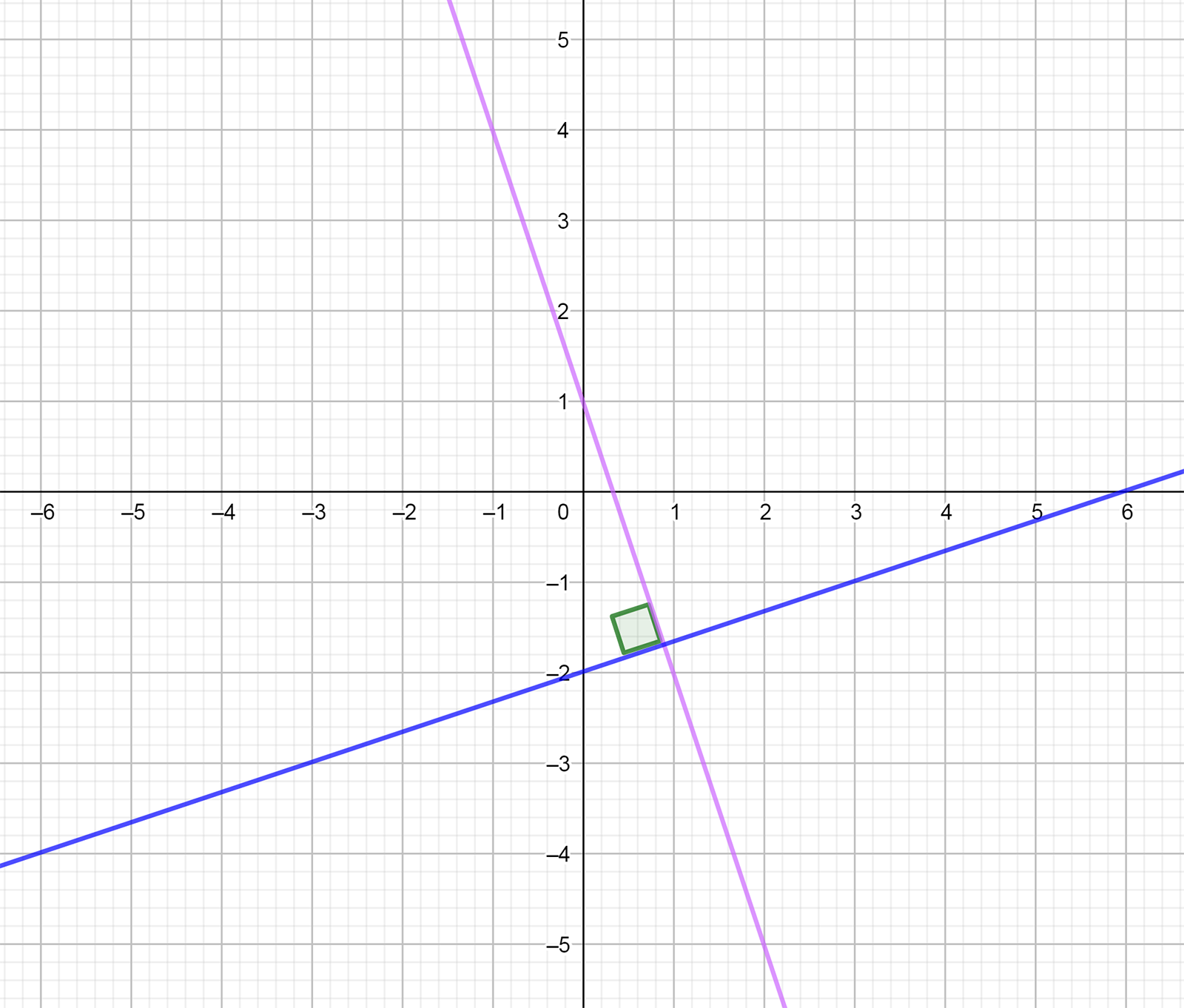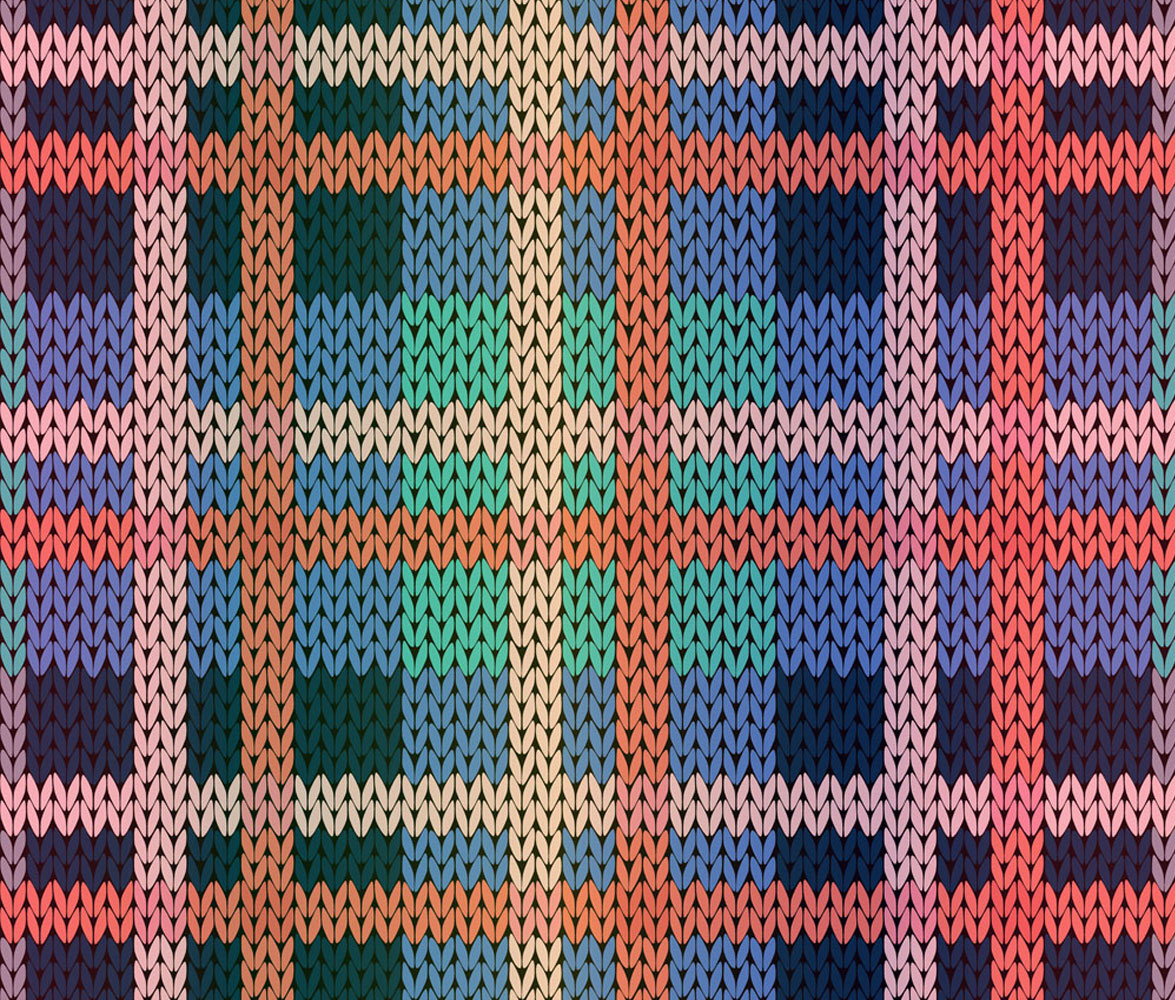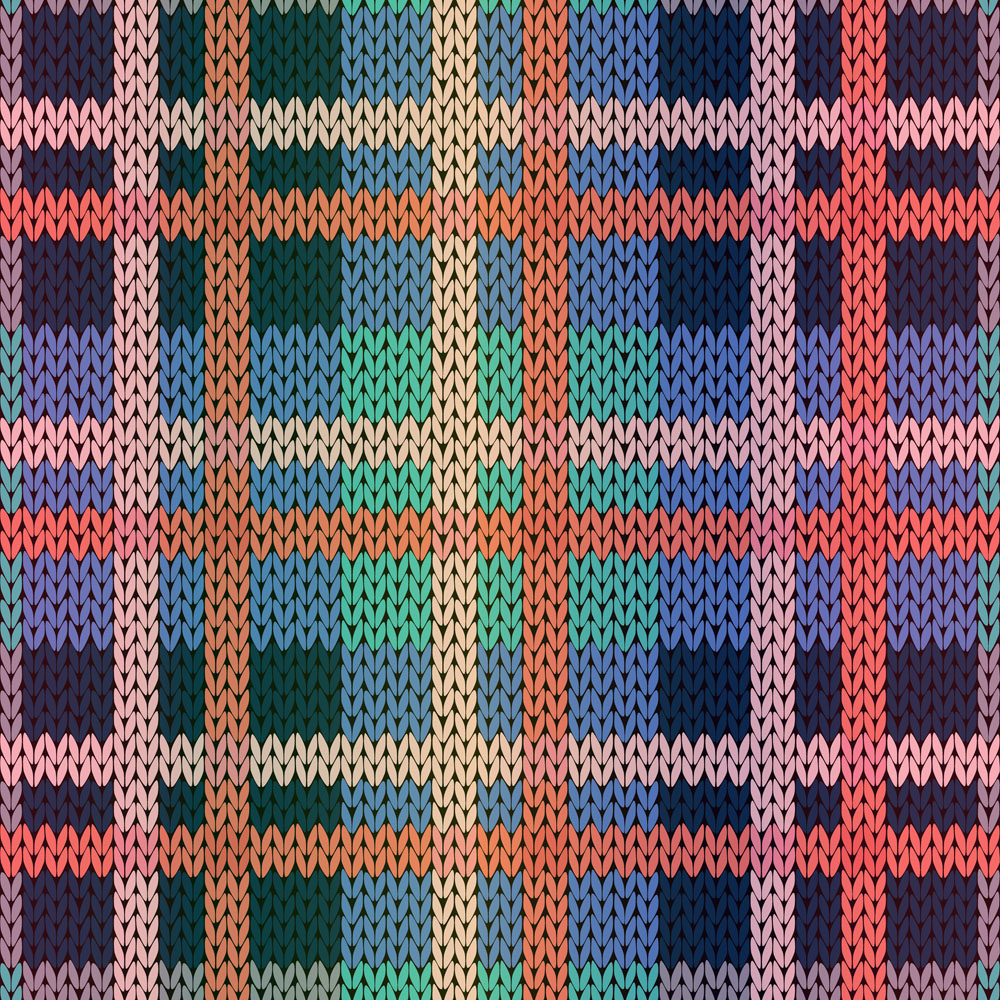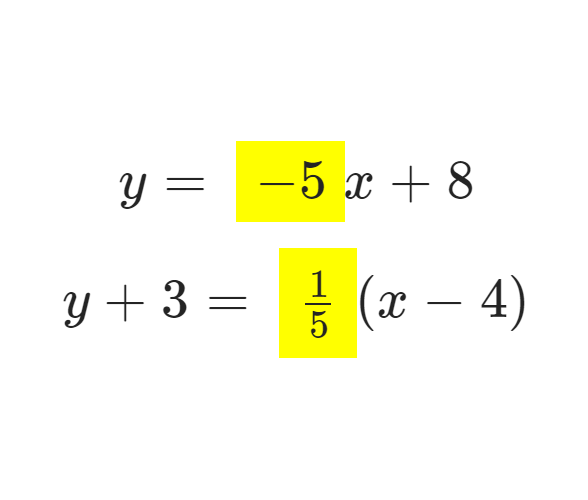You have learned that parallel lines are special sets of lines that extend forever in each direction and do not touch or intersect. When you look at the equations of parallel lines, their slope values are identical, but their y-intercept values are different.
Another set of special lines are perpendicular lines. The blue and the green line shown on the graph are perpendicular. A set of perpendicular lines intersects at a 90∘ angle. When perpendicular lines are represented using an equation, their slopes have values that are opposite reciprocals.

Graph of two perpendicular lines. One line is blue. The other line is green.
Opposite Reciprocals
A number's opposite reciprocal has the opposite sign of the original number, and the number's numerator and denominator are interchanged. All real numbers except zero have reciprocals. The product of a number and its opposite reciprocal is always −1.
For example:
The opposite reciprocal of the number 7 is −17.
The product of these numbers equals −1 because 7⋅−17=−1.
The opposite reciprocal of the number −38 is 83.
The product of these numbers equals −1 because −38⋅83=−1.
Every number except 0 has an opposite reciprocal. The number 0 does not have an opposite reciprocal because the expression −10 is undefined. This is an important idea for perpendicular lines because the slope of a horizontal line is m=0. Since 0 has no opposite reciprocal, you cannot express the relationship between an intersecting horizontal and vertical line using opposite reciprocals. Because of this, all the perpendicular lines you will see in this lesson are known as non-vertical perpendicular lines.
Look at the images shown below. Each image represents a set of perpendicular lines. Study each one carefully, then click the image to learn why the set can be described as perpendicular lines.
Recognizing the opposite reciprocal of a number is key to determining if two equations represent perpendicular lines. How well can you identify the opposite reciprocal of a number? Use the activity below to practice. Match the number on the left with its opposite reciprocal on the right.




